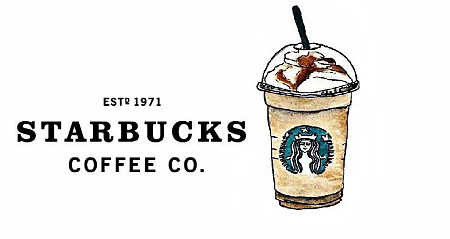Starbucks faces Challenge Multi-Coffee Brands compete for Chinese Market
Multi-coffee brands face challenges in the Chinese market Starbucks faces challenges
Starbucks is always a brand with no shortage of topics.
Recently, there are media reports in the United States, a Chicago woman sued Starbucks for $5 million because there were too many ice cubes in cold drinks. The news drew attention to Starbucks, which was widely questioned about its high pricing in China.
It is inconceivable for Chinese consumers to be claimed for a lot of money for more ice in a drink.
In January, the global president of Starbucks came to China and said it would expand its business in China, opening 500 new stores in China each year.
Wang Zhendong, secretary general of the Shanghai Coffee Association, believes that Starbucks has fostered the habit of Chinese consumers going to stores to consume coffee, as well as the Chinese coffee culture. However, Starbucks started with a standardized fast food model, with the development of China's economy, consumers gradually give up the pursuit of fast food model, Starbucks old model is also likely to be abandoned by consumers in the future.
Accelerate China's investment
The competition is fierce
According to Starbucks' 2015 results, revenue in 2015 was nearly $19.2 billion and net profit was $2.759 billion. Revenue in the Asia-Pacific region, including China, rose from $1.13 billion to $2.396 billion and accounted for 12.5 per cent of Starbucks' total revenue from 6.9 per cent. Apart from the United States, the Asia-Pacific region has become Starbucks' second-largest market, compared with revenue of just $917 million in China and the Asia-Pacific region in 2013.
By the end of January 2016, Starbucks had opened more than 2000 stores in China. In the face of the fast-growing Chinese market, Starbucks said it would speed up the opening of stores in China.
Gao Xiaonan, head of public relations at Starbucks China, said that from entering China in 1999, there were only 1500 stores in early 2015, and the previous development was relatively cautious. But it will accelerate its development in the future. Over the next five years, Starbucks plans to invest more in China, adding 500 stores a year, with a total of 3400 stores expected by 2020.
According to data provided by Starbucks China, there was a net increase of 444 new stores in fiscal 2015, the highest in nearly three years. In the global market, Starbucks has added only about 1500 stores a year. By the end of January 2016, the number of stores in China had reached 2000. China accounts for about 10 per cent of Starbucks' 23000 stores around the world. Starbucks reported 150 new stores in China in the first quarter of fiscal 2016.
But there are also media who question Starbucks' speed. Before 2007, Starbucks' tone was also expansion, but in 2008, during the economic downturn, Starbucks announced the closure of 600 stores worldwide and entered into diversification, divestiture and other non-main businesses such as records. In January 2009, Starbucks braked again and announced the closure of another 900 stores.
Starbucks attributes its rapid development in China to a unique culture. "Starbucks is the third place besides home and work, and Chinese consumers also use Starbucks as a social place to gain loyal customers with their high-end positioning," Gao Xiaonan told reporters. "
As for the reason why Starbucks is growing rapidly in China, industry experts say Starbucks' higher pricing ensures its higher profits and is able to open more stores in China.
Hu Lu, deputy secretary general of Yunnan Coffee Association, told reporters: "Starbucks' high price makes coffee a luxury." The third space it creates gives Starbucks the strength to set higher prices.
Wang Zhendong, secretary general of the Shanghai Coffee Association, believes that early entry into the Chinese market has given Starbucks a monopoly position, but Starbucks' advantage lies in quality management, which represents a standardized fast food culture, which can be called McDonald's in the coffee industry. Just like the rapid rise of McDonald's in the developing world, Starbucks' success has a similar factor. Lack of coffee culture in developing countries, Starbucks enters as a popularizer, has the first opportunity, and can rise rapidly.
Starbucks has its own understanding of increasing investment in China. Gao Xiaonan told reporters: "Starbucks is very confident in the Chinese economy, but as a retail enterprise, Starbucks has its own understanding of China and is optimistic about the Chinese economy. The middle class will double in growth in the next five years, which is why they invest so much in the Chinese market. Although there are negative voices about China's economy in the world, Starbucks insists on investing in the Chinese market for a long time. "
At Starbucks' global shareholder meeting this year, Starbucks CEO Howard Schultz mentioned that China has become Starbucks' largest international market and expressed great confidence in the Chinese economy, according to data provided by Starbucks' China Public Relations Department. China's middle class will grow to 600 million in the next decade.
However, the competition in the Chinese market is becoming increasingly fierce. Other coffee companies have also increased their presence in the Chinese market. The reporter learned from Pacific Coffee (6.070,-0.08,-1.30%) that as of April 2016, the number of global stores had reached 477, including 329 in Chinese mainland region. It will expand its business scope in the mainland through franchise stores. According to public information, the total number of British COSTA coffee stores in China reached 344 in 2014 and plans to double the number of stores to 900 by 2020.
Shen Meng, executive director of Xiangsong Capital, believes that Starbucks developed rapidly in the early period in China, opening a large number of stores and further reducing marginal costs. So the more stores you open, the greater the coverage, and the higher the revenue. But other brands have also acquired more stores by joining in order to accelerate their development in China. The franchise model only needs to export brands and management, which can quickly occupy market share and make profits. This light asset model is conducive to rapid expansion. In the future, more and more brands will expand their market share in China by joining. The competition will also become increasingly fierce.
Gao Xiaonan said Starbucks opened one and a half stores a day and had confidence in the market, which stems from Starbucks' confidence in its products and experiences. The Starbucks experience is unique and a way of life that cannot be replicated by other competitors. Starbucks is confident to maintain its edge in the competition. The domestic coffee market is large enough and growing at a high speed. Consumers have gradually accepted the coffee culture and welcome other competitors to develop together.
Wang Zhendong believes that the rise of independent coffee shops in China, the large number and rapid growth rate, and the increasing investment of other foreign chain stores in China will have a huge impact on Starbucks. However, these are not enough to shake Starbucks' position. For Starbucks, the biggest enemy is itself, and the reason for success is the reason for failure. Starbucks has successfully cultivated the coffee culture in emerging markets, and once the local coffee culture in emerging markets is formed, Starbucks' standardized fast food model will be snubbed and may even be forced to withdraw from the corresponding market. The withdrawal of Starbucks from the Australian and Italian markets, for example, is a failure, both of which have developed a very strong own coffee culture. Starbucks' fast food model is forced to withdraw because it is not in line with the country's consumption habits, so Starbucks will increasingly withdraw from mature markets and have to continue to develop developing countries. Coffee culture with Chinese characteristics is also gradually formed, and the Starbucks model will also be challenged and snubbed.
The experiences of McDonald's and KFC reflect the impact on the fast food model in China. With the development of China's economy, consumers' enthusiasm for foreign fast food has declined, McDonald's has closed some Chinese stores, and KFC's China business has been packaged and sold by its parent company. Once China forms its own coffee culture, Starbucks will inevitably be hit. " Wang Zhendong said.

Important Notice :
前街咖啡 FrontStreet Coffee has moved to new addredd:
FrontStreet Coffee Address: 315,Donghua East Road,GuangZhou
Tel:020 38364473
- Prev

Italian Saicaf automatic coffee machine Italian coffee machine brand Italian flavor
Saicaf's hometown is in Bali, Italy, located in the southeast of Italy, bordering on the Adriatic Sea, is the main port leading to the Balkans and the eastern Mediterranean, but also a famous cultural city with a long history. Bari has been an important maritime hub as early as ancient Roman times. Saicaf S.P.A (Co., Ltd.), founded in Bali in 1932, is a leading Italian coffee company.
- Next

Starbucks in Japan serves spirits and beer to customers in the afternoon.
Starbucks, a world-renowned coffee brand, recently opened a branch on the sidewalk of a residential area in Xiabei, Japan. Unlike traditional Starbucks stores, it offers not only high-end coffee and homemade desserts, but also spirits and beer in the afternoon. In addition, baristas here wear plain clothes to serve customers, making guests feel at home. This branch with a terrace
Related
- What documents do you need to go through to open a coffee shop? coffee shop coffee shop certificate processing process
- How to purchase Coffee beans in small Cafe how to choose a suitable supplier for domestic Coffee supply Company
- How to drink Starbucks Fragrance White Coffee? how to make Australian White Coffee? what Italian coffee beans are recommended?
- The Story of Flora Coffee: the name of Flora Coffee Bean and the implication of the Flowers on Florna Coffee
- How much does a cup of coffee cost? How much is the profit of a cup of coffee? What is the profit of the coffee shop in a year?
- Yunnan small Coffee, known as "fragrant Coffee", introduces the characteristics of Alpine Arabica Coffee producing areas in Yunnan, China
- 2023 latest Starbucks full menu price list how much is a cup of Starbucks coffee what is better to drink the most popular hot and cold drinks recommended
- Starbucks different kinds of Coffee Price list Starbucks menu 2023 Top Ten Best drinks in Starbucks
- Starbucks Spring praise Comprehensive matching Coffee Bean theme Story Packaging implication and taste description
- The cost of a cup of coffee latte American coffee cost price and selling price

